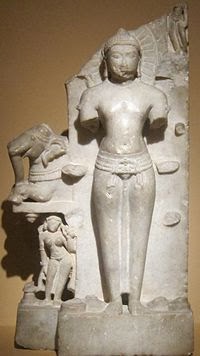Jainism traditionally known as Jaina dharma is an Indian religion. Jainism believe in non-violence towards all living bring and equality all forms of life. Amd also belive in non-violence amd self-control are the means by which they can obtain liberation. Present age jainism divided in to major sects
1.Svetambara
2.Digambara
The word jainism is fund from the Sanskrit verb jin which means conquer. It refers to a battle with the passions and body pleasures that jaina ascetics undertake Those who win this battle are termed as jina. The jaina is therefor usd to refer to laymen and ascetics of this tradition alike.
jainisim is one of the oldest region in all world. Jainism trace thair history through a succession of 24 Tiethankar with rushabha as the 1st and Mahaveer as the last of the prsent age.
For a long period of time jainsim was the tate region of Indain kingdoms and widely adopted in the Indain subcontainent. The jainism region has been in decline since the 8th century CE due to the growth of and follower Hinduism.
The population of jainism in India is very less with 4.2 million adherents and the communities in Belgium, Canada, Honh Kong, Japan, singapore and United States. Jainism have the highest degree of literacy od any religious community in India and their manuscript libraries are the oldest in the country.
-Kripen mehta
1.Svetambara
2.Digambara
The word jainism is fund from the Sanskrit verb jin which means conquer. It refers to a battle with the passions and body pleasures that jaina ascetics undertake Those who win this battle are termed as jina. The jaina is therefor usd to refer to laymen and ascetics of this tradition alike.
jainisim is one of the oldest region in all world. Jainism trace thair history through a succession of 24 Tiethankar with rushabha as the 1st and Mahaveer as the last of the prsent age.
For a long period of time jainsim was the tate region of Indain kingdoms and widely adopted in the Indain subcontainent. The jainism region has been in decline since the 8th century CE due to the growth of and follower Hinduism.
The population of jainism in India is very less with 4.2 million adherents and the communities in Belgium, Canada, Honh Kong, Japan, singapore and United States. Jainism have the highest degree of literacy od any religious community in India and their manuscript libraries are the oldest in the country.
-Kripen mehta

.jpg)

.jpg)
.jpg)
.jpg)
.jpg)
.jpg)

.jpg)
.jpg)
.jpg)


.jpg)
.jpg)
.jpg)
.jpg)













.jpg)

.jpg)
